
Please click image for more info
If there is a perfect beginner’s keyboard, the Yamaha PSR-E263 might just be it. It is lightweight and portable, has excellent sound and a great Yamaha sound engine, and is both easy and fun to play. For beginners and young people who want to actually enjoy piano practice, and experience the fun and accomplishment that encourages them to continue with music, you simply can’t go wrong with this keyboard.
Yamaha PSR-E263 Quick Overview
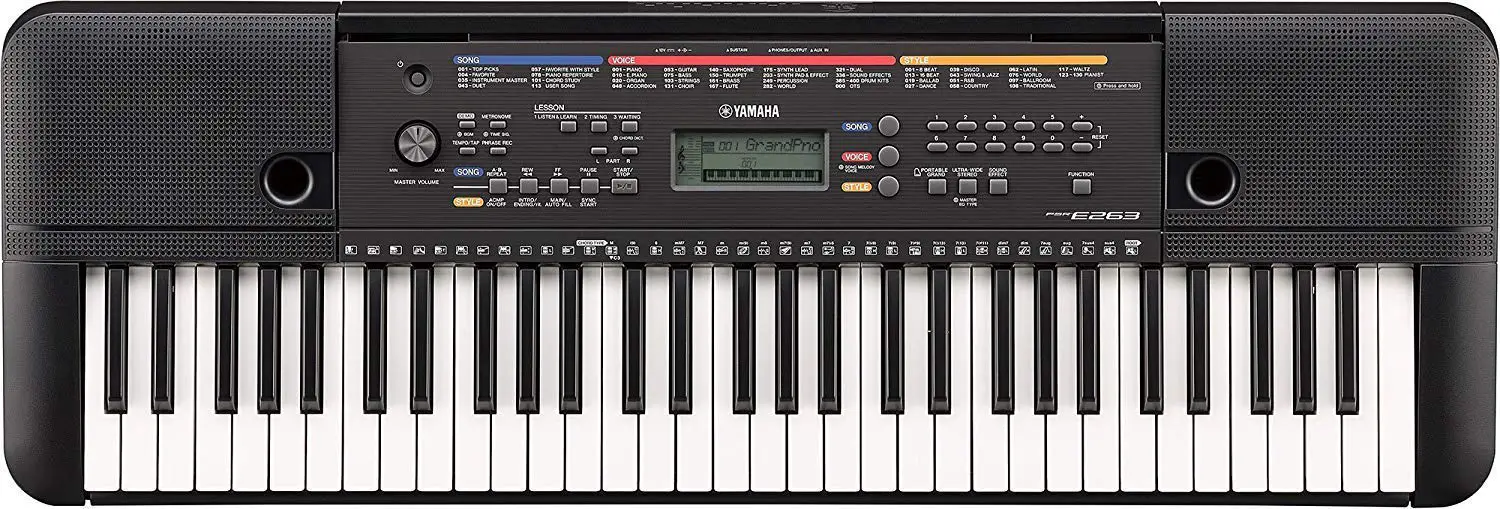
The 61-key PSR-E263 is an affordable keyboard designed for beginners and young players. It’s a fantastic way to learn a digital keyboard, because it has all the features one would expect in a more advanced keyboard, including instrument voices, accompaniment styles, polyphony, recording capabilities and more.
However, these capabilities are more limited in number and simpler to execute, so that beginners can learn both analogue and digital musical styles, playing and experimenting, before upgrading to a more complex instrument.
Because it is lightweight and can be powered by AC or batteries, it can easily be taken anywhere and played indoors or out. And all this is available at a surprisingly reasonable price
Video Overview of Yamaha PSR-E263
Yamaha PSR-E263 FAQs
When did IT come out?
PSR-E263 came out in 2017
What are the dimensions of the keyboard?
The dimensions are 37 x 12.5 x 4.2″ (939.8 x 317.5 x 106.7 mm).
What is the weight?
The weight of the Yamaha PSR-E263 is 8.8 pounds (4kg)
How much does it cost?
PSR-E263 costs $130 but it may vary depending on where you buy it.
How many keys does PSR-E263 have?
It has 61 keys.
How many sounds does this keyboard have?
It has 400 sounds.
Where can I see a demo/test?
You can see a demo/test on the official channel of Yamaha: Yamaha PSR-E263 demo
Where can I see an unboxing?
You can see an unboxing here: Yamaha PSR-E263 unboxing
Where to buy the Yamaha PSR-E263?
It is available in large shops including Walmart and Amazon.
Is the keyboard touch sensitive?
No, PSR-E263 isn’t touch sensitive.
What is the difference between the PSR-E263 and the Yamaha YTP-260?
The digital piano Yamaha YPT 260 is usually about ~$20 cheaper than Yamaha PSR E263, but with so little price difference this can vary.
These two models have a lot of things in common, let´s see it here:
- They both have 61 standard keys and Master EQ. Additionally they have 130 preset styles and 32 polyphonic voices or notes.
- The Yamaha YPT 260 has 384 sounds + 16 drum / SFX kits, likewise the PSR E263.
- These two models have the one-touch setting function, metronome and transposer. Also, they both have a learning function and the “Yamaha Education Suite”
- Similarly both models have connections of Auxiliary audio input, headphone output and sustained pedal input (sustained pedal not included).
- Also, both models have 2 x 2.5W speakers and they measure (width x depth x height) 940 x 317 x 106mm and weight 4 kg.
- These keyboards can be used with a battery. Additionally they have support for sheet music and power supply PA-130.
Their basic differences are:
- The PSR E263 has a dual function instead, which allows you to divide the keyboard into 2 different sounds.
- The YPT 260 has a Four Hands mode, which allows the keyboard to being use by two persons at the same time on the same tone.
Yamaha PSR-E253 or Yamaha PSR-E263: which is best?
The Yamaha PSR E263 and Yamaha PSR-E253 both have same price but the Yamaha PSR E263 has some extra features which makes it better than Yamaha PSR-E263.
Such features are:
- Master EQ (6 types).
- 12 new instrument sounds and 3 new percussion kits.
- 30 new preset styles.10 new songs (preset songs).
Yamaha PSR-E263 or Yamaha PSR-E363: which is best?
Yamaha PSR-E363 costs $70 more than the Yamaha PSR-E263 but have some distinct features.
Their similarities are:
- Both models have 61 keys and not touch sensitive
- Both models have similar reverberation and chorus.
- They have connections of same auxiliary audio input, headphone output and sustained pedal input.
- Both of them use same General MIDI and XGlite.
- They have similar amplifiers and round speakers.
- Both of them use 6 x AA batteries.
Their differences are:
- Yamaha PSR-E263 has 400 sound presets and 112 song presets. But Yamaha PSR-E363 has 574 sound presets and 159 song presets.
- Yamaha PSR-E263 has maximum 32 polyphony but Yamaha PSR-E363 has 48 polyphony.
- Yamaha PSR-E263 has 130 style presets but Yamaha PSR-E363 has total 175 style presets.
- Yamaha PSR-E263 consumes 6W and Yamaha PSR-E363 consumes 5W.
- Yamaha PSR-E263 has dimensions of 37 x 12.5 x 4.2″ (939.8 x 317.5 x 106.7 mm) and weighs 8.8 pounds (4 kg). Yamaha PSR-E363 has dimensions of 37.2 x 14.5 x 4.6″ (945 x 369 x 118 mm) and weighs 10.1 pounds (4.6 kg without Batteries).
Specifications of Yamaha PSR-E263
|
Specification |
Description |
|---|---|
|
Keys |
61 full-size keys |
|
Weight |
Weighs just over 8 pounds without batteries |
|
Display |
LCD display |
|
Songs |
112 song music database includes 12 Chord Study songs |
|
Reverb Settings |
9 levels of reverb5 types of chorus |
|
Polyphony |
32 max levels of polyphony |
|
Style Control |
130 built in styles with style control including auto fill |
|
Harmony |
26 types of harmony |
|
Voice & Effects |
400 total instrument voices, with 384 panel voices and 16 drum and sound effects. |
|
Functions |
|
|
Jacks & Ports |
|
|
Record and Playback |
Record and playback 1 song with onboard memory |
|
Power |
AC or DC powered with 6 AA batteries |
|
Metronome |
Yes |
|
Others |
|
Features of Yamaha PSR-E263
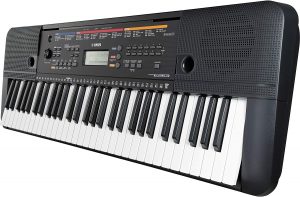
The Yamaha PSR-E263 Portable Keyboard has a lot of attractive features to help beginners and young people get the most out of their instrument.
|
FEATURE |
DESCRIPTION |
|---|---|
|
Design |
It is a compact keyboard with 61 full-size keys. It weighs just over 8 pounds without batteries, and has an LCD screen and buttons for menu navigation and the most commonly used features. It also has a built-in music rest. |
|
Sound |
The Yamaha PSR-2363 is driven by the Yamaha AWM stereo sampling sound engine. While AWM isn’t Yamaha’s premiere sound engine, it is extremely good for digital keyboards in this price range. It also has two 2.5 watt amplifiers, and two 12 cm onboard speakers, for surprisingly powerful sound and Ultra-Wide Stereo from a small device.The onboard library of 400 instrument voices includes 16 drum and sound effects. It has 9 types of reverb, 5 types of chorus, 6 types of master EQ, and a one-touch Grand Piano button for big piano sound. |
|
Functions |
With duo keyboard, you can split the keyboard for two players, which is perfect for music lessons or duets. A built-in metronome also helps beginners keep time. |
|
Yamaha Education Suite |
The Yamaha Education System provides simple, effective music lessons within the keyboard, with practice and exercises for one hand or both hands, so you can learn the piano at your own pace. |
|
Connectivity |
The Aux-in port allows you to plug in a portable music device, and play songs through the keyboard’s speakers. This is great for playing along with your favorite songs. It also has a 1/4” headphone jack that can be used for headphones or to connect external speakers. |
|
Features |
One-touch setting allows you to choose from a variety of sound and instrument presets, or customize and save your own and restore them quickly. Record and playback one song using onboard memory, to play along with yourself or improve practice. Parents love the auto-power-off feature which automatically shuts down the keyboard when it is idle, saving energy and battery life. |
Who the Yamaha PSR-E263 is Most Suitable For?
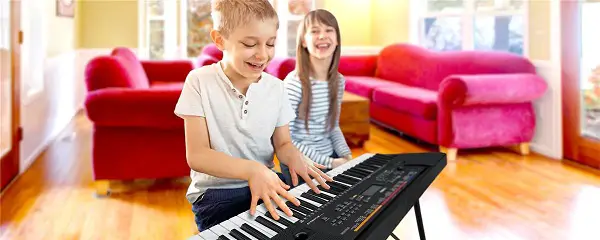
The Yamaha PSR-E263 is designed for beginners, and is particularly suitable for young beginners. The duo keyboard function is perfect for lessons or accompaniment, while the Yamaha Education system, built-in song library, and aux-in function give lots of opportunities to play and practice beginning to advanced songs.
For children, piano practice can be boring and repetitive, but the option to play the same pieces with a wide range of different instrument voices makes practice more fun and engaging. It has all the features you would expect in a digital keyboard, like transpose, EQ, instrument voices, and reverb, without having so many complex options and settings that might confuse new players.
It has real, robust Yamaha sound, so that it doesn’t sound like a cheap, disappointing keyboard, but is still affordable enough that a parent doesn’t have to worry about investing in an instrument that a child may not stick with.
Perhaps not surprisingly, the Yamaha PSR-E263 is also very popular with piano teachers, who often take a keyboard to different classrooms and lesson locations. They appreciate having a portable keyboard that sounds great and has built-in lessons, keyboard duo functionality, and a metronome. They like the fact that it’s affordable, reliable, produces great sound, and that kids really enjoy interacting with the instrument.
What’s Included in the Box?

Unfortunately, the keyboard-only model of the Yamaha PSR-E263 comes with the keyboard and nothing else. At the very least, you will need to also purchase a power supply.
Additional Accessories
Power Supply
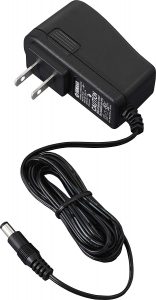
You should always use the manufacturer’s power supply with the Yamaha PSR-E263. If you want to purchase it separately, it is available as a bundle with the keyboard, or as a stand-alone item on Amazon.
Yamaha PSR-E263 Bundles
If you want to have an affordable seat and music stand for the Yamaha PSR-E263, you could get the Yamaha PSR-E263 bundle, that includes a seat, stand, and power supply in one convenient package, that is priced equivalently to purchasing the items individually.
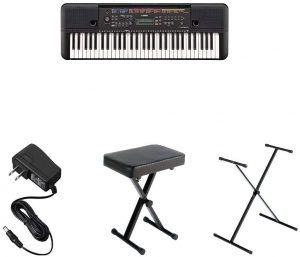
Headphones
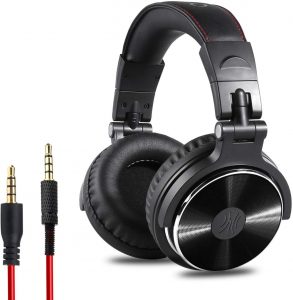
There’s no denying that piano practice can be annoying for neighbors and family members, and perhaps beginners don’t want others hearing their early missteps. Headphones are an essential accessory for this keyboard, and the OneOdio Adapter-Free Closed Back headphones are a great choice. The over ear closed back design improves sound quality and isolation, to give players privacy and avoid disturbing others.
Foot Pedal
While a foot pedal isn’t necessary when a player is just beginning to learn, it’s a great idea to introduce it as soon as possible. The Yamaha FC4A is a reliable, affordable foot pedal that is designed to complement the PSR-E263, and allows you to learn and take advantage of a wider range of the keyboard’s capabilities.
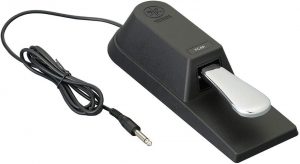
Pros & Cons of Yamaha PSR-E263
|
PROS |
|---|
|
|
cons |
|---|
|
Yamaha PSR-E263 Tutorial Videos
Yamaha has made an entire series of quick tutorial videos for specific functions and features of the PSR-E263. You can see them here:
Yamaha PSR-E263 Owner’s Manual
At the Yamaha website, you can download the Owner’s Manual and a text version of the song book. Find them here:
CLICK TO DOWNLOAD YAMAHA PSR-E263 MANUAL
Yamaha PSR-E263 vs. Yamaha PSR-E363

The Yamaha PSR-E263 is the Yamaha PSR-E363’s smaller sibling. The two models are extremely similar, but the E363 has some more advanced capabilities that may make it appealing to a beginner who wants more room to grow. Since the two models are so alike, here’s an overview of their differences:
|
SIZE AND WEIGHT |
|---|
|
The E363 is a couple inches bigger, and almost two pounds heavier than the E263. |
|
Keys |
|---|
|
Both have 61 keys, but the E363 has touch responsive keys. |
|
DISPLAY |
|---|
|
Both have LCD displays, but the E363 has a backlight. |
|
SOUND |
|---|
|
Both have Yamaha AWM sound engines and the same size and wattage of speakers and amplifiers. |
|
POLYPHONY |
|---|
|
The E263 has 32; the E363 has 48. |
|
VOices |
|---|
|
The E263 has 400; the E363 has 574, and is compatible with GM/XGlite. |
|
EFFECTS |
|---|
|
Both have 5 chorus effects and 6 Master EQ effects. The E263 has 9 types of reverb, while the E363 has 12 types of reverb and an additional 26 types of harmony effects. |
|
Keyboard FUNcTIONS |
|---|
|
Both models have duo keyboard, but the E363 also has dual and split keyboard functions. |
|
MELODY SUPPRESSOR |
|---|
|
The E363 has it; the E263 does not. |
|
ACCOMPANIMENT STYLES |
|---|
|
The E263 has 130 style presets; the E363 has 165. |
|
SONG LIBRARY |
|---|
|
The E263 has 112 songs; the E363 has 158. |
|
RECORDING CAPACITY |
|---|
|
The E363 has more capacity than the E263, able to record 5 songs with 2 tracks each; the E263 can only record 1 song with 1 track. |
|
USB PORTS |
|---|
|
The E363 has one; the E263 does not. |
|
Onboard Learning |
|---|
|
The E363 has more advanced lessons than the E263 |
In such a head-to-head comparison, the PSR-E363 is clearly the better keyboard, and touch responsive keys are a great feature. It’s a more robust instrument, and it’s not much more expensive than the E263.
However, the E363 is not compatible with a piano app. This means that controlling all these functions and settings must be done with the LCD screen, which can mean spending a lot of time looking at the manual and pressing buttons.
Many early learners will not truly appreciate the differences of having 174 more voices, 35 more style presets, or 3 additional types of reverb, particularly if they are cumbersome to access and control. This makes the PSR-E363 a better choice for adults, who will make better use of the wider range of features, and who have more need of USB connectivity and melody suppression in their keyboard, even if they are just beginning to learn the piano.
In other words, both keyboards are great choices for beginners. The PSR-E263 is a better choice for young beginners and children, while the PSR-E363 is a slightly better choice for older children, adult beginners, and more advanced learners.
The Best Beginner Keyboard?
Conclusion
The Yamaha PSR-E263 is an exceptional keyboard for a young learner or even an adult beginner. The sound is full and rich, so that adults won’t feel like they are playing with a toy. It has a great library of effects and instrument voices, providing lots of opportunity for learning and experimenting.
And it’s lightweight, compact, and can be battery-powered, for easy portability anywhere you want to take it, with onboard lessons that mean there is no reason to skip practice.
There’s a reason that the PSR-E263 enjoys such fantastic ratings and reviews, from learners and pros alike. It’s a fantastic beginner keyboard for the price, with reliable Yamaha quality built into every note

Yamaha PSR E363 (click image for more info)

